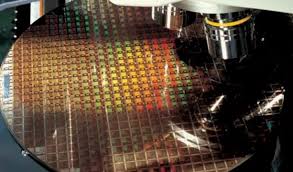
Breaking News
 NonConformist Series: Practical Wealth - Join us virtually Dec 29-30, 2025
NonConformist Series: Practical Wealth - Join us virtually Dec 29-30, 2025
 New bill would allow private citizens to fight cartels: 'WE ARE UNDER ATTACK'
New bill would allow private citizens to fight cartels: 'WE ARE UNDER ATTACK'
 Carnivore Got Me 90% There. This One Drink Changed Everything
Carnivore Got Me 90% There. This One Drink Changed Everything
Top Tech News
 Perfect Aircrete, Kitchen Ingredients.
Perfect Aircrete, Kitchen Ingredients.
 Futuristic pixel-raising display lets you feel what's onscreen
Futuristic pixel-raising display lets you feel what's onscreen
 Cutting-Edge Facility Generates Pure Water and Hydrogen Fuel from Seawater for Mere Pennies
Cutting-Edge Facility Generates Pure Water and Hydrogen Fuel from Seawater for Mere Pennies
 This tiny dev board is packed with features for ambitious makers
This tiny dev board is packed with features for ambitious makers
 Scientists Discover Gel to Regrow Tooth Enamel
Scientists Discover Gel to Regrow Tooth Enamel
 Vitamin C and Dandelion Root Killing Cancer Cells -- as Former CDC Director Calls for COVID-19...
Vitamin C and Dandelion Root Killing Cancer Cells -- as Former CDC Director Calls for COVID-19...
 Galactic Brain: US firm plans space-based data centers, power grid to challenge China
Galactic Brain: US firm plans space-based data centers, power grid to challenge China
 A microbial cleanup for glyphosate just earned a patent. Here's why that matters
A microbial cleanup for glyphosate just earned a patent. Here's why that matters
 Japan Breaks Internet Speed Record with 5 Million Times Faster Data Transfer
Japan Breaks Internet Speed Record with 5 Million Times Faster Data Transfer
Taiwan Semiconductor Will Have Volume Production of 3 Nanometer Chips in 2022

TSMC was the first company to use ASML's EUV lithography machines for high-volume production and now has at least three processes that use EUV for select layers. They use EUV lithography for its N7+, N6, and N5 nodes.
TSMC's 2nd generation 7 nm technology (N7+) uses EUV for up to four layers in order to reduce its use of multi-patterning techniques when building highly complex circuits. The 6 nm process (N6) is for customers to re-use IP designed for 1st generation 7 nm, per the report. TSMC's 5 nm process (N5) can use EUV for up to 14 layers. 5nm has significant increase in transistor density and performance enhancements.
2nd generation 5 nm (N5P) and 4 nm (N4) fabrication processes are based 5 nm technology and will have performance and power benefits. N5P will be available in 2021. N4 chips will have volume production in 2022.
Next-generation 3 nm process (N3) will be a full node improvement over N5. N3 will have 70 percent logic density gain, 15-percent performance gain, and 30-percent power reduction over the 5-nm process. N3 will use EUV over 20 layers.
Nextbigfuture covered Taiwan Semiconductors plans from 2017. TSMC has kept on track with its Moore's Law roadmap to reach 3-nanometer chips by 2022.

 Aluminum Causes Brain Damage
Aluminum Causes Brain Damage Advanced Propulsion Resources Part 1 of 2
Advanced Propulsion Resources Part 1 of 2

